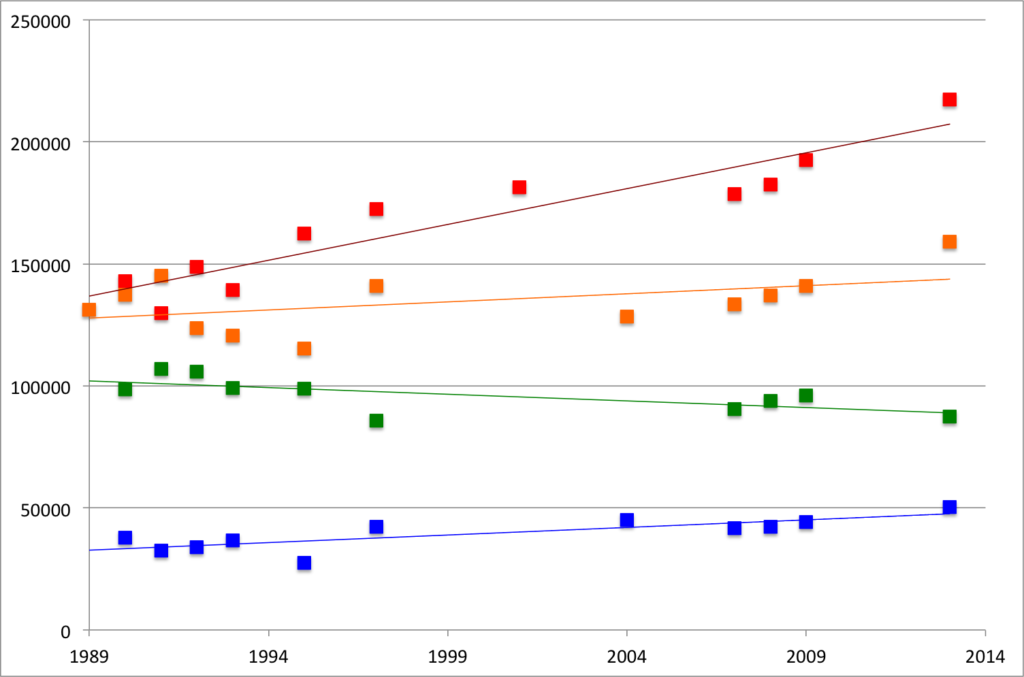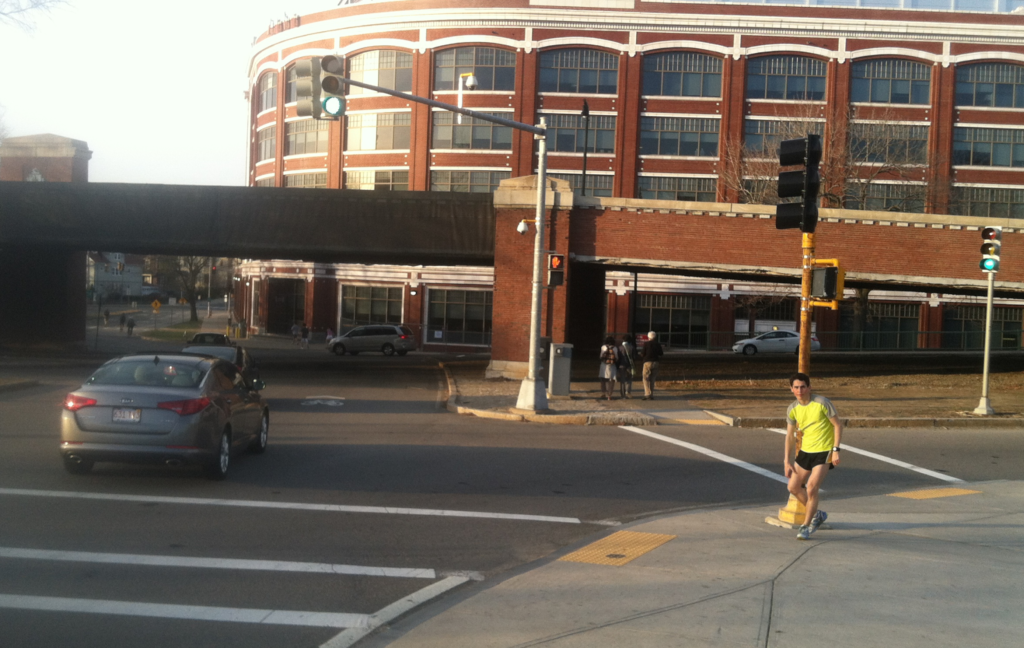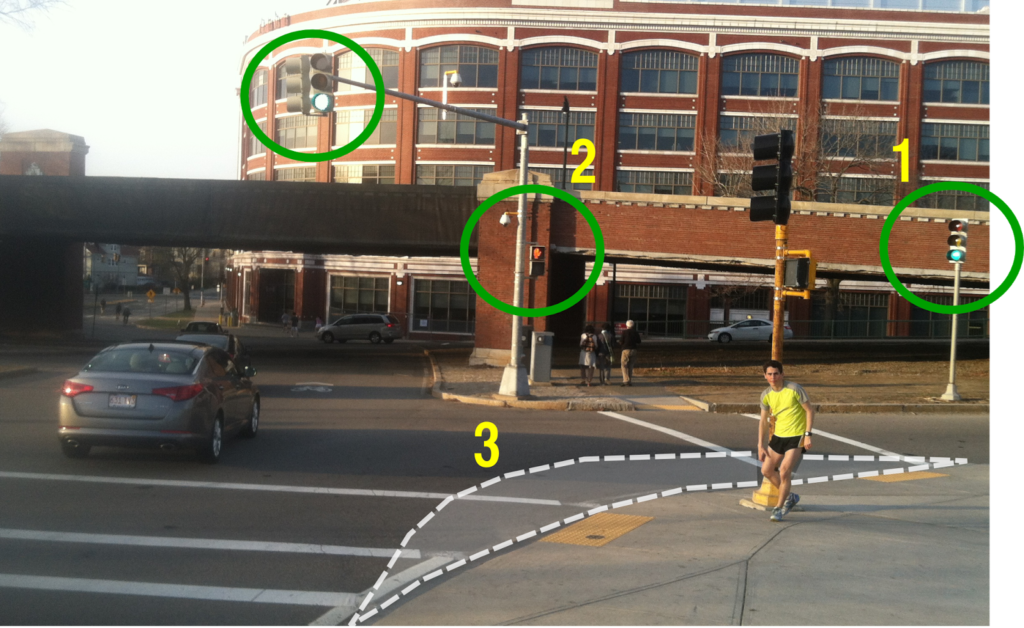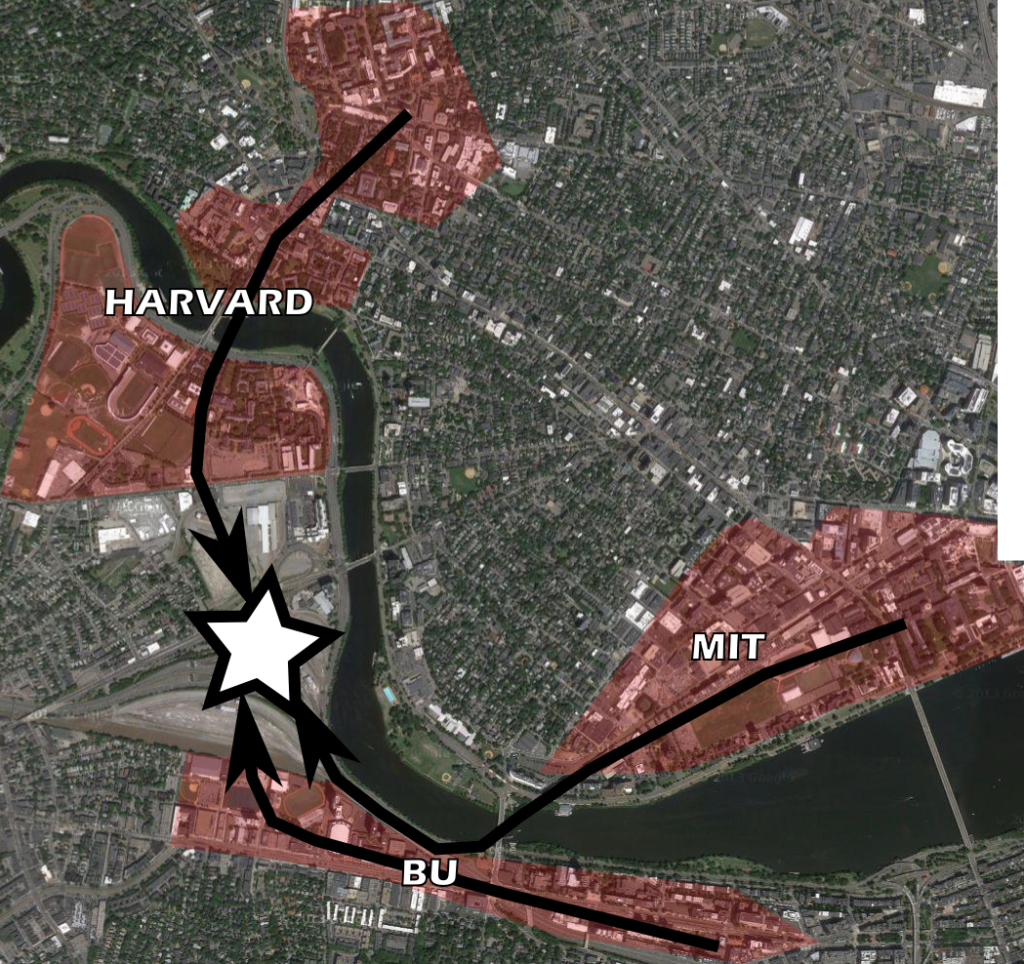It seems like something that occurs every few months. Someone doesn’t like wearing bike helmets, and rather than ride around without a helmet on, they decide that everyone would bike more if it wasn’t for those pesky helmets, and they decide to write about it on the Internet. They find some studies, draw some conclusions, and use data to say “hey, look, it’s actually safer to bike without a helmet.” Here’s the thing:
THEY ARE WRONG.
The latest installment comes from Howie Chong. I’m sure Howie is a heck of a guy. But before he tells people not to wear helmets, he should get his facts straighter. Here’s his thesis:
I have made a careful and conscientious choice to not wear a helmet when I’m cycling in urban areas because I strongly believe that it will help improve the overall safety of cycling in the long run.
And here’s what I have to say about it …
Let’s first get one thing out of the way: if you get into a serious accident, wearing a helmet will probably save your life. According to a 1989 study in the New England Journal of Medicine, riders with helmets had an 85% reduction in their risk of head injury and an 88% reduction in their risk of brain injury. That’s an overwhelming number that’s backed up study after study. Nearly every study of hospital admission rates, helmeted cyclists are far less likely to receive serious head and brain injuries.
If the piece he wrote ended here, it would be fine. Studies do back this up. If you are in a crash, a helmet will dramatically improve outcomes. Now, he’s going to spend a few dozen paragraphs circling around this with some very loose logic attempting to negate all of these benefits. He describes auto traffic and goes on:
So a helmet provides a level of protection from this danger. It makes you feel safer.
No! A helmet does not make you feel safer. This is false equivalence. On the one side, we have data showing that a helmet makes you safer. As he points out in his first paragraph, a helmet makes you safer. On the other side, we have a perception of how a bicycle rider feels (he extrapolates this to all riders). It it not touchy-feely. Helmets reduce the risk of head injury seven-fold. That’s not a feeling.
But a broader look at the statistics show that cyclists’ fear of head trauma is irrational if we compare it to some other risks.
He goes on to cite a 1978 study from San Diego that attributes 6% of head injuries to bicycling and 53% to automobiles.
The studies that are out there give us mixed messages about the relative safety of the different modes of transport. What I am saying is that these statistics raise an interesting question: If we’re so concerned about head injuries, why don’t we wear helmets all the time? Why do places that have mandatory helmet laws for cyclists not have them for drivers or pedestrians?
No, they don’t give us mixed messages. They just don’t give us enough data. I don’t have the numbers from 1978, but more recently (from 1990 to today; there has been little bicycling growth in San Diego), about 1% of San Diegans biked to work. 85% drove. Once you control for these denominators, the numbers change dramatically. Bicyclists account for 600% more head injuries than would be expected based on their mode share, cars account for 60% fewer. Drivers have seat belts designed to keep their heads away from hard objects. Pedestrians are usually on sidewalks and only interact with vehicles in intersections. Bicyclists, on the other hand, have none of these protections.
He goes on to describe a Forbes article which suggests that graduated licenses are the best way to reduce head injuries among teenager short of forcing them to wear helmets, a comment made surely in jest. His response:
Despite the fact that car accidents are the number one cause of all fatal head trauma among teenagers, the suggestion that teens wear helmets when they drive is simply brushed off. The passage treats the idea of mandatory driving helmets as completely preposterous.
Again: No! The idea of wearing helmets is preposterous because helmets would not help in a car accident. There are certainly no studies. What keeps you safe in car accidents are seat belts and headrests. If you are properly bucked in to a car and are in an accident, your risk of head injury is dramatically reduced because your head is kept away from metal and pavement. This is what headrests and seat belts and roll cages are designed to do. A helmet would just sit there flopping around. He asks “Why has cycling been singled out as an activity in need of head protection?” Because we’ve already addressed passive protection in cars.
He doubles down:
Bike helmets may reduce the risk of head and brain injury by 85-88%—but only for those who get into accidents.
Oh, good, I’ll just never get hit by cars. Good.
If we take a closer look at the article we see that both the experiment and the control groups studied are those who have already been hospitalized for bike injuries. … Studies show that helmeted cyclists who are hospitalized are far less likely to have serious head trauma than bare-headed cyclists that have been hospitalized. But wouldn’t this be true, regardless of the activity? Logically, helmeted drivers should also receive significantly fewer head injuries than bare-headed drivers. Similarly, helmeted pedestrians should be less likely to receive serious head trauma than bare-headed ones.
But such studies don’t exist because there aren’t enough helmeted drivers or pedestrians to make a comparison. In other words, one of the reasons we think helmeted cyclists are safer than unhelmeted ones may be due to availability of information more than actual levels of head safety.
Maybe that explains why there’s no comparable fear of driving or walking without a helmet.
My head is spinning. Where to begin. How about “Logically, helmeted drivers [are safer].” This is illogical. Again, drivers in cars are protected by different mechanisms which achieve similar results. Seat belt use dramatically reduces the severity of head injuries. Think of the seat belt as the helmet of a car. It’s the first line of defense. It serves the same purpose. And there are plenty of studies that show this. There is no information deficit. Comparing helmet use among drivers and cyclists is comparing apples to oranges. Helmet use to seat belt use is the right comparison here.
He goes on to cite a New York Times article from 2001 regarding helmet use. It, however, does not draw any conclusions, and several of the anecdotes it gives pertain to mountain biking, not the kind of bicycle commuting which has grown dramatically in the past 15 years. It doesn’t conclude that more helmets correlate with higher head injury rates. If it comes to any conclusion, it’s that helmet use is just a part of bicycle safety.
Then he goes on about a study which shows that drivers will give more space to an unhelmeted cyclist than a helmeted one. Fine. How about education and enforcement for cars which squeeze bicyclists, whether they’re wearing a helmet or not.
The he gets in to mandatory helmet laws.
So as much as helmets decrease the chance of head injury when you get into an accident, they may actually increase your chance of getting into an injury in the first place.
Again, this is a very much false equivalence. On the one hand, helmets make you safer, and there’s data to back that up. On the other hand, they may increase your chance of being in an accident, but no one knows. They may not.
There is another significant way that the use of helmets harm cyclists: Bike helmets discourage cycling. An Australian study on mandatory helmet laws concluded that laws that required cyclists to wear head protection actually decreased the number of cyclists on the road. The implication of this study? The fewer cyclists on the road, the less likely drivers will be accustomed to sharing road space with cyclists, ultimately increasing the hazards faced by cyclists and further dissuading people from hopping on their bikes.
First of all, this is regarding a mandatory helmet law. I lived in Melbourne and people were not happy about that law. But a helmet law is very different than suggesting that people wear a helmet. In the US, at least, if people don’t wear a helmet they don’t have to worry about being given a $100 ticket. That is much of what discourages cycling where helmets are mandatory. I agree that helmet laws are heavy-handed and bad policy (for bicyclists, anyway; they are certainly a good idea for motorcyclists).
[O]ur society has conditioned cyclists to feel unsafe without a helmet, even though wearing one might actually increase the chance of a collision with a vehicle; and even though other activities capable of inflicting serious head wounds are enjoyed bare-headed without stigma.
Again with the false equivalence. We feel unsafe without a helmet because it is statistically less safe to bike without a helmet. There is no data that shows that cyclists without helmets get in to fewer accidents.
Helmet use is very uncommon in bike-friendly cities like Copenhagen and Amsterdam, where cyclists have been socialized to see cycling as a safe activity. In order to promote the same culture here, we need to encourage people who don’t bike that they should give it a try.
What else do they have in Amsterdam and Copenhagen? They have protected bicycle infrastructure. They have laws which assign blame and real, actual legal remedies to drivers involved in bike-car collisions. Nearly everyone is, at some point, a cyclist, so they know to look for other cyclists, even when they’re driving. The assertion that if we don’t wear helmets we’ll suddenly turn in to Copenhagen is ridiculous.
If there was conclusive proof that bike helmets reduce the total number of serious head injuries compared to other normal activities, then I’d reconsider my stance.
There is conclusive proof! This “other normal activities” (driving and walking) is a total red herring; we don’t wear helmets when driving because we have other protections in place, and we don’t walk in mixed traffic on the highway. This statement is completely illogical.
But if I’m not the kind of person who wears a helmet when I take a walk or get behind the wheel of a car, then there’s no logic to me wearing one when I’m on a bike, particularly if I’m confident in my urban bike safety ability.
Do you put on a seat belt when you get in a car? If so, you are the kind of person who wears a helmet when you get behind the wheel of a car. (I’ll get to the confidence in urban bike safety in a moment.)
Meanwhile the proof is pretty strong that vehicles give me more space when I’m biking without a helmet.
Okay. So you dismiss the proof that wearing a helmet makes you safer. But when it comes to a single study that shows that unhelmeted cyclists, it holds a lot of water. The study also showed female cyclists got more room. Maybe Mr. Chong should consider a sex change, or at least a wig.
In a city biking, that’s the kind of injury I’m most concerned about.
Now, let’s go in to personal anecdotes. About two years ago, I was biking to work. 2.5 miles, mostly in bike lanes, and on a route I knew very, very well. It’s the exact type of situation that Mr. Chong would eschew a helmet:
- I was on a street with a bike lane
- It was sunny and warm
- I was biking in the only League of American Bicyclists Gold-rated city on the East Coast
- I was in a city with a 9% bicycle mode share; the fifth highest in the country, so cars should be used to looking for cyclists
- I was following all traffic rules
None of this precluded a driver parked across the street blindly making a U-turn in to my path. I barely had time to brake and hit his car at full speed. I was scraped up and had a minor concussion and some residual back pain for a couple of months. I also had a helmet with a visible crack in it. Had I not had this helmet, the crack would have likely been to my head.
If I hadn’t been wearing a helmet, the driver still wouldn’t have seen me. He didn’t look down the road and see me and say “oh, a helmeted cyclists, I am now going to make an illegal U-turn.” He didn’t look at all. Not wearing a helmet would have potentially turned me in to a vegetable, and that is certainly not a way to get people to bike in the long run. (“Oh, I’m not riding a bike; Ari was biking to work and some moron turned in to him and now he eats through a tube” is not a good way to encourage bike riding.) We have a long, long way to go before bicycling in America looks anything like Copenhagen or Amsterdam; we’d have to reform infrastructure, law and behavior dramatically. Until then, it most certainly makes sense to wear a bike helmet when riding a bike.
Mr. Chong, please redact this misinformed post.









